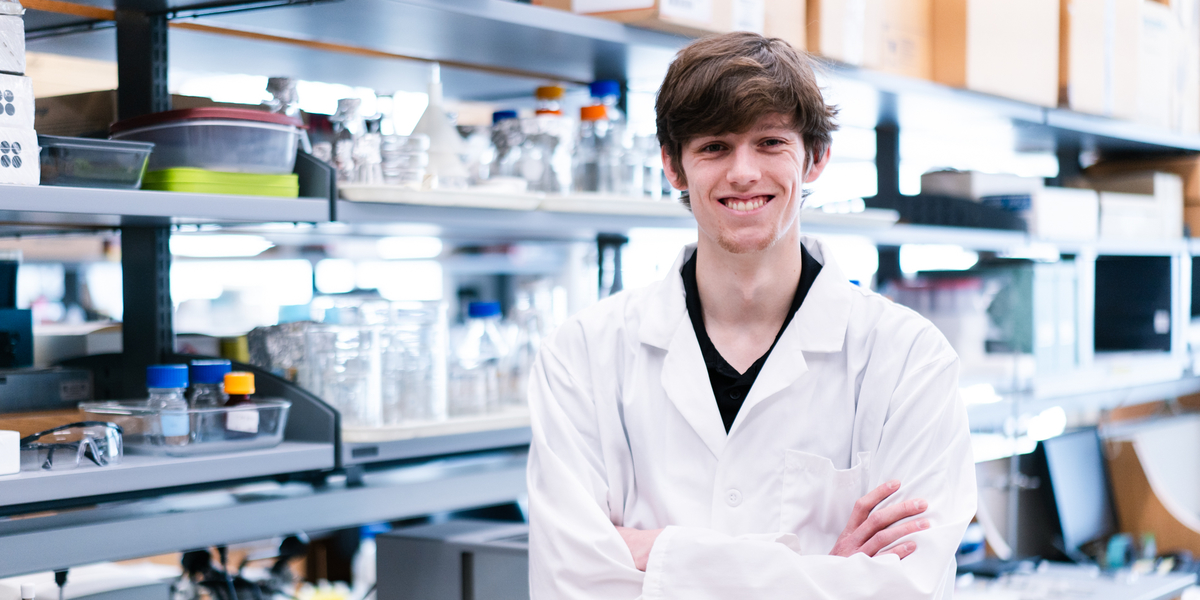
Samuel Gonzalez is a fifth-year Ph.D. Candidate in the Molecular, Cellular, Developmental Biology and Genetics (MCDBG) program and a previous recipient of the Genetics and Genomics Predoctoral Training Program Fellowship. His research in Melissa Gardner’s lab focuses on how a protein linked with cancer localizes along microtubules – filament-like structures that give cells shape, aid in cell division and assist in material transport.

How might you explain the relevance of your research to someone who’s not a scientist?
The protein I study, EB1, has been associated with cancer and higher expression levels have been associated with a worse prognosis in some cancer types. The goal of my work is to understand how the protein is able to get to where it needs to be in the cell (at the ends of microtubules), with the hopes this process can be targeted clinically in the future. For a long time, scientists thought EB1 binds to one particular site on a microtubule – let’s call it site A. I’m saying it can also bind to site B and site B might be easier to target with currently available drugs. It’s a pretty fundamental science question that could have some implications for clinical research.
How does your individual research fit into the broader questions being asked in the Gardner lab?
Our lab is broadly interested in microtubule dynamics and understanding the mechanisms behind cellular division. Microtubules are important for aligning genetic material during cell division, but are also important for cell mobility and act like a “railroad” for some materials to be transported within a cell. I mostly focus on studying the protein EB1 during a cell’s normal life cycle instead of studying it during cell division.
What do you like about your work?
I really appreciate that being in the Gardner Lab allows for working across scales. Some labs will only work with cells or only work with animals, or something like that. In Gardner’s lab, I'm able to do computational work, work outside of cells (to have a more careful understanding of the exact components we’re using) and then work in cells. I think that working across scales can allow for more robust science because you can show in multiple scenarios that what you're finding seems to be consistent. Furthermore, Dr. Gardner is a fantastic principal investigator which makes working in her lab more enjoyable.
How do you see your research evolving?
At the end of the day, I want to try to produce research that will one day be useful in a clinically-relevant context. Because I do basic science, however, anything I discover likely isn't going to be relevant for a while. Right now I’m trying to test the effect of currently available chemotherapy drugs on their ability to bind to a site on the microtubule and reduce EB1 binding (at site B) that could in turn reduce EB1’s function. Our preliminary work suggests that using these drugs do indeed reduce EB1 binding at site B and therefore they may be useful treatments in cancer types where a higher EB1 expression is correlated with a reduced prognosis. Notably, however, any findings from our lab would need to be further validated in a more clinically relevant setting before being used in patients to determine how effective these drugs could be for cancer types with EB1 over-expression.